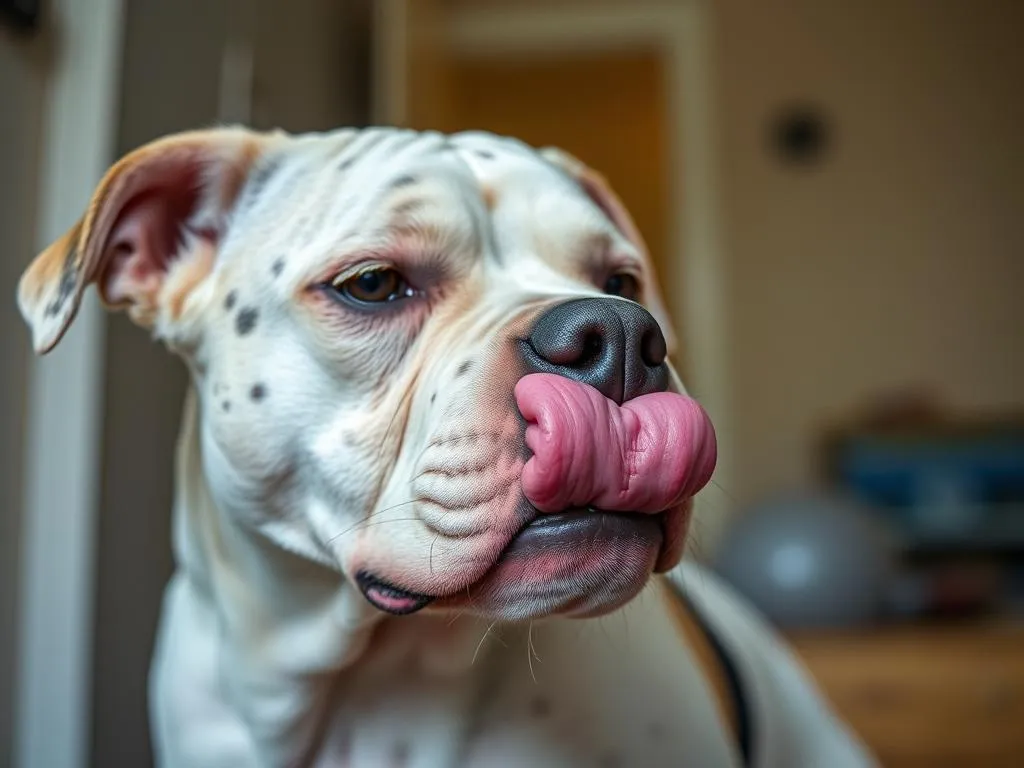
Cushing’s Disease is a condition that affects dogs, often leading to various health complications if not addressed appropriately. Understanding the symptoms and behavior changes associated with this disease is crucial for pet owners. One behavior that may raise concern is excessive licking. This article will explore the relationship between excessive licking and Cushing’s Disease, helping you identify if your dog may be exhibiting signs of this condition.
Understanding Cushing’s Disease
What is Cushing’s Disease?
Cushing’s Disease, or hyperadrenocorticism, occurs when a dog’s body produces an excess of cortisol, a hormone vital for various bodily functions. This condition can arise from different sources, leading to two primary types of Cushing’s Disease:
- Pituitary-dependent Cushing’s Disease (PDH): This is the most common form, caused by a tumor in the pituitary gland that stimulates the adrenal glands to produce excessive cortisol.
- Adrenal-dependent Cushing’s Disease (ADH): This form results from a tumor located in one of the adrenal glands, leading to similar overproduction of cortisol.
Causes of Cushing’s Disease
Several factors contribute to the development of Cushing’s Disease in dogs:
- Genetic factors: Certain breeds are predisposed to developing this condition, making it essential to be aware of your dog’s lineage.
- Environmental influences: Factors like exposure to certain chemicals or medications (such as corticosteroids) can increase the risk.
- Hormonal imbalances: Any disruption in the endocrine system can lead to excessive cortisol production.
Prevalence and Risk Factors
Cushing’s Disease can affect dogs of all breeds, but some are more susceptible, including:
- Poodles
- Dachshunds
- Boxers
- Beagles
Age is another significant factor, as most affected dogs are middle-aged or older (typically around 7-12 years). Gender may also play a role, with female dogs having a slightly higher incidence than males.
Symptoms of Cushing’s Disease
Common Symptoms
Identifying the signs of Cushing’s Disease early can lead to better management of the condition. Common symptoms include:
- Increased thirst and urination: Dogs may drink more water and urinate more frequently, which can be alarming for pet owners.
- Changes in appetite: Affected dogs may experience increased appetite or, in some cases, a decreased desire to eat.
- Potbellied appearance: The accumulation of fat around the abdomen can lead to a characteristic potbellied look.
Behavioral Changes
In addition to physical symptoms, dogs with Cushing’s Disease may exhibit behavioral changes, such as:
- Increased lethargy: Dogs may seem more tired or less energetic than usual.
- Changes in sleep patterns: Some dogs may sleep more, while others may develop insomnia and appear restless.
- Excessive licking: This behavior can manifest in various forms, from licking their paws to more generalized licking of the body.
The Role of Licking in Dog Health
Natural Behaviors in Dogs
Licking is a natural behavior in dogs. They lick for several reasons, including:
- Grooming: Dogs often lick themselves to keep their fur clean.
- Comfort: Licking can be a self-soothing behavior, especially in stressful situations.
- Communication: Dogs may lick other dogs or humans as a sign of affection.
Excessive Licking: What It Could Mean
While licking is a normal behavior, excessive licking can point to underlying issues, including:
- Allergies: Dogs may lick to relieve itching caused by allergies to food, pollen, or other irritants.
- Skin infections: Bacterial or fungal infections can lead to localized licking.
- Anxiety or stress-related licking: Dogs may lick excessively when they are anxious or stressed, often as a coping mechanism.
Is Licking a Sign of Cushing’s Disease?
Correlation Between Licking and Cushing’s Disease
Excessive licking can indeed be a symptom of Cushing’s Disease. Dogs with this condition may lick more frequently due to skin irritations or discomfort associated with hormonal changes. Increased cortisol levels can lead to skin thinning, making dogs more prone to infections and irritation, which can trigger licking behavior.
Anecdotal evidence from pet owners highlights cases where dogs with Cushing’s Disease exhibited excessive licking as one of the earliest signs, leading to subsequent diagnoses.
Differentiating Symptoms
It’s essential to differentiate licking caused by Cushing’s Disease from other potential causes. Here are some tips to consider:
- Observe other symptoms: If your dog displays excessive licking alongside increased thirst, appetite changes, or lethargy, it may warrant further investigation.
- Consider the context: Evaluate whether the licking is localized (e.g., specific paws) or more generalized. Localized licking may suggest allergies or infections rather than Cushing’s.
- Monitor frequency and duration: Excessive licking that persists over time or increases in frequency can indicate an underlying health issue.
Diagnosis of Cushing’s Disease
Veterinary Diagnostics
If you suspect your dog may have Cushing’s Disease, it’s essential to consult with a veterinarian. They will conduct a thorough examination and may recommend several diagnostic tests, including:
- Blood tests: These tests can measure cortisol levels and assess overall health.
- Urine tests: Urine cortisol-to-creatinine ratio tests can help determine if excess cortisol is present.
- Imaging tests: Ultrasounds or X-rays may be used to visualize the adrenal glands and check for tumors.
Importance of Early Diagnosis
Early detection of Cushing’s Disease can significantly impact your dog’s health. Catching the disease in its early stages allows for prompt treatment, which can enhance your dog’s quality of life and potentially extend their lifespan.
Treatment Options for Cushing’s Disease
Conventional Treatments
Treatment for Cushing’s Disease typically involves medication or surgery. Common options include:
- Medications: Drugs like trilostane and mitotane are often prescribed to help control cortisol levels.
- Surgical options: If an adrenal tumor is present, surgical removal may be necessary to treat the underlying cause of the condition.
Natural Remedies and Lifestyle Changes
In addition to conventional treatments, some pet owners explore natural remedies and lifestyle changes to support their dog’s health:
- Dietary adjustments: A balanced diet low in processed foods can help manage symptoms.
- Stress reduction techniques: Creating a calm environment and engaging in gentle exercise can reduce anxiety.
- Supplements: Certain supplements like omega-3 fatty acids may help improve skin health and reduce inflammation.
Preventing Cushing’s Disease
Regular Health Check-ups
Routine veterinary visits are essential for early detection of potential health issues, including Cushing’s Disease. Regular check-ups can help monitor for symptoms and assess your dog’s overall health.
Healthy Lifestyle Practices
Maintaining a healthy lifestyle can also play a crucial role in preventing Cushing’s Disease:
- Nutrition and diet tips: Ensure your dog receives a well-balanced diet tailored to their specific needs.
- Exercise recommendations: Regular physical activity can help maintain a healthy weight and reduce stress.
- Mental stimulation and wellness activities: Engaging your dog in training, puzzle toys, and socialization can enhance their overall well-being.
Conclusion
Understanding Cushing’s Disease and its symptoms, including excessive licking, is vital for pet owners. While licking can be a natural behavior, it can also indicate underlying health issues. Monitoring your dog’s health closely and consulting a veterinarian at the first signs of concern is crucial for ensuring a long and healthy life for your furry friend. Maintaining a healthy lifestyle through proper nutrition, exercise, and regular veterinary care can help mitigate the risk of developing such conditions.
By staying informed and proactive, you can provide the best care for your dog and ensure they lead a happy, healthy life.









